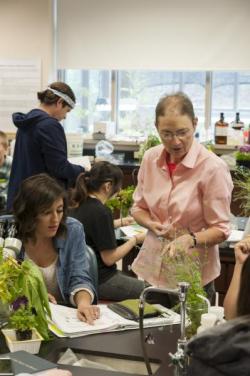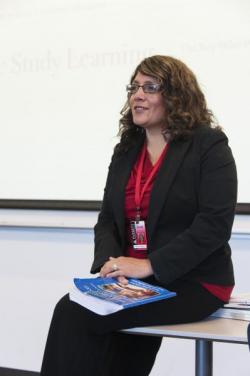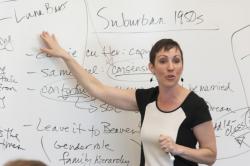Using Case Studies to Improve Understanding and Foster Active Learning
Using Case Studies to Improve Understanding and Foster Active Learning: Solving Wicked Problems That Might Have No Answers
EvCC faculty from diverse disciplines use case studies to help students confront what one faculty member call "wicked problems, problems whose solutions are not going to make every participant happy."
 Fayla Schwartz (pictured left) is faculty in the Biology Department at EvCC. “Case studies engage students because they become interested in a true story… This is so much more stimulating to students than just seeing a list of hormones in their text and trying to memorize them. When they are more engaged, they remember the concepts much more clearly!”
Fayla Schwartz (pictured left) is faculty in the Biology Department at EvCC. “Case studies engage students because they become interested in a true story… This is so much more stimulating to students than just seeing a list of hormones in their text and trying to memorize them. When they are more engaged, they remember the concepts much more clearly!”
 Paula Solis Krock (pictured right) is faculty in the Early Childhood Education program at EvCC. “As we researched and questioned and debated different solutions for these real situations, this class learned Early Childhood theory and philosophy, learning programs and teaching strategies as well as child development and advocacy, to solve this case.”
Paula Solis Krock (pictured right) is faculty in the Early Childhood Education program at EvCC. “As we researched and questioned and debated different solutions for these real situations, this class learned Early Childhood theory and philosophy, learning programs and teaching strategies as well as child development and advocacy, to solve this case.”
Shelly Jordan-Zirkle (pictured below) is faculty in the History Department at EvCC. “Students love talking about a controversy and they grapple with the historical repercussions. They also love cases because there is no right or singular answer. They grapple with the numerous ways to look at this and have to think about the pros and cons of each proposed solution.”
 In May 2004, Tlingit carver Odin Lonning was contracted to carve a specific piece that will become the property of EvCC. The Whale Totem was installed on campus in September 2005, but by March 2006 there were signs of deterioration.
In May 2004, Tlingit carver Odin Lonning was contracted to carve a specific piece that will become the property of EvCC. The Whale Totem was installed on campus in September 2005, but by March 2006 there were signs of deterioration.
A conservation plan was discussed, and the College engaged a conservator. But deterioration continued, and the totem was re-sited to the EvCC arboretum with no additional work planned. Was this the right decision? Or is this a wicked problem with no right answer?

